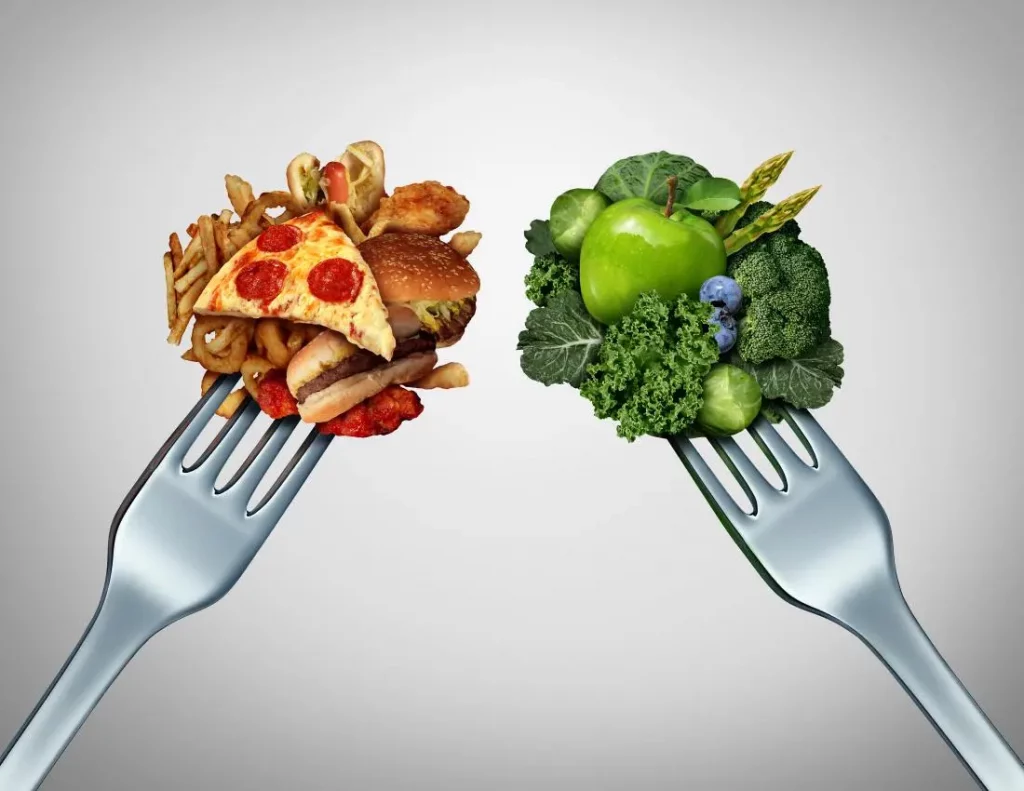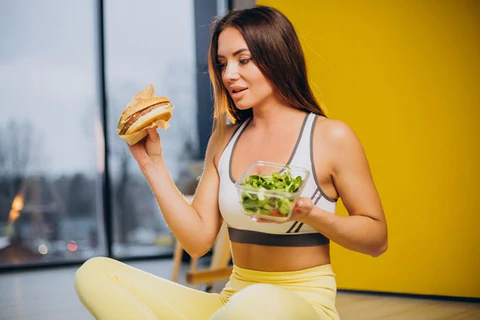As the sun sets on the dreary, frigid weather, thoughts naturally turn to the bright summer days ahead, and, for many of us, beach season. It also provides the excitement of preparing your body for that bikini, board shorts, or, if you’re feeling brave, a Speedo, you bought months ago. You focused on building muscle mass throughout the winter, but it’ll soon be time to pull all that sexiness out of hibernation.
Bodybuilding appears straightforward on the surface: you eat a lot of food and lift a lot of weights to get as muscular as possible, right? That’s not entirely true. The construction phase is the initial step in the process. A bodybuilder’s prep phase includes reducing fat from their frame in order to accentuate the muscles they gained in the gym. This is also known as the cutting stage.
One of the most crucial questions you’ll ever have to answer is how to structure your cutting program. In some ways, knowing when to start is just as important as knowing how to start. I can’t give you a one-size-fits-all answer because your body and lifestyle are unique. I can only assist you in developing an efficient weight-loss approach that does not leave you fumbling for answers or make you feel horrible about yourself by putting you on a miserable crash diet. Let’s start by discussing the differences between bulking and cutting.

What’s the Difference Between Bulking and Cutting?
You’ve probably heard the terms bulking and reducing before. There are two dietary regimens that can aid in body composition improvement. You’ve almost certainly done both unless you’re freshly new to bodybuilding.
Bulking is the process of gaining weight, primarily in the form of muscle mass, through a combination of strength training and caloric excess. You want as little of that weight gain as possible to be fat. However, even the most successful bulks will result in fat gain.
The technique of lowering – or “cutting” – body fat in order to make muscles more visible and defined is known as cutting. Unlike standard weight-loss strategies, a cutting diet focuses on maintaining lean body mass through dietary adjustments and intense physical activity.
Bulking is usually straightforward and pleasurable, but trimming is more challenging and unpleasant. After all, the majority of us would rather eat than go hungry.
What Is A Cutting Diet?
A cutting diet, also known as shredding, is intended to help people lose weight while keeping muscle mass.
Bodybuilders and fitness enthusiasts frequently adopt the cutting diet as a short-term program prior to an event, competition, or as part of their training plan.
A cutting diet is different from other weight-loss diets in that it is personalized to the individual, contains more protein and carbs, and should be complemented with weightlifting.

To reach their aims, they combine a reducing diet with weightlifting. When calorie reduction begins, weightlifting helps people maintain muscle mass, which helps to prevent muscle loss.
A cutting diet normally lasts 2–4 months, depending on how slender you were before dieting, and is timed to coincide with bodybuilding competitions, sporting events, or special occasions like holidays.
Also read: How To Perform Heel Raises And The Top 6 Reasons To Do Them
How To Do A Cutting Diet?
Calculate how many calories you consume on a daily basis
You lose weight when you eat less calories than you burn on a daily basis.
Your weight, height, lifestyle, gender, and amount of physical activity all influence how many calories you should consume each day in order to lose weight.
In general, a woman needs 2,000 calories per day to maintain her weight and 1,500 calories to lose 1 pound (0.45 kg) of fat every week, but a male needs 2,500 calories to maintain his weight and 2,000 calories to lose the same amount.
A cutting diet works best when you lose weight gradually and regularly, such as 1 pound (0.45 kg) every week or 0.5–1% of your body weight.
Although a bigger calorie deficit may help you lose weight faster, studies have shown that it also increases the likelihood of muscle loss, which negates the diet’s objective.
Calculate your protein consumption
Getting enough protein on a reducing diet is critical.
Several studies have found that eating a high-protein diet can help you lose weight by improving your metabolism, lowering your appetite, and preserving your lean muscle mass.
You’ll need more protein if you’re on a cutting diet than if you’re merely attempting to keep in shape. This is due to the fact that you’re consuming less calories but exercising on a regular basis, which increases your protein needs.
Most studies suggest that 0.7–0.9 grams of protein per pound of body weight (1.6–2.0 grams per kg) are enough to sustain muscle mass on a reducing diet.
For example, a 155-pound (70-kg) person should consume 110–140 grams of protein each day.
Determine how much fat to consume
Fat is necessary for weight loss since it plays an important role in hormone production.
While it’s common to lose weight on a cutting diet, not eating enough might affect the production of hormones like testosterone and IGF-1, which help maintain muscle mass.
For example, studies suggest that reducing fat intake from 40% to 20% of total calories lowers testosterone levels by a small but significant amount.
However, some studies suggest that a drop in testosterone levels does not always imply muscle loss if you eat enough protein and carbs.
Experts recommend that you consume 15–30% of your calories from the fat on this diet.

Because one gram of fat contains 9 calories, a 2,000-calorie diet should consist of 33–67 grams of fat per day.
If you exercise frequently, the lower end of that fat range can be better for you because it allows you to eat more carbohydrates.
Calculate your carbohydrate intake
Carbohydrates are necessary for preserving muscle mass while on a weight-loss regimen.
Eating adequate carbs can help you minimize muscle loss since your body prefers to use carbs for energy rather than protein.
Carbohydrates might also improve your workout performance.
Carbohydrates should make up the remaining calories on a calorie-restricting diet after protein and fat have been eliminated.
Fat has 9 calories per gram, but protein and carbs both have 4 calories per gram. After subtracting your protein and fat needs from your overall calorie intake, divide the residual figure by 4, which should tell you how many carbs you can eat per day.
A 155-pound (70-kg) person on a 2,000-calorie reducing diet might consume 110 grams of protein and 60 grams of fat. The remaining 1,020 calories can be filled with carbohydrates (255 grams).
Do Meal Timings And Frequency Matter?
According to the International Society of Sports Nutrition, protein should be ingested at 3–4 hour intervals throughout the day and within 2 hours of activity (ISSN).
Before, after, or both, the ISSN recommends consuming protein with carbohydrates.
The size and timing of any meals ingested previously to the workout impact the amount of protein required afterward.
Evidence suggests that a moderate meal frequency of 3–6 meals per day, each with at least 20 grams of protein, is best for bodybuilding.
Also read: Super Sets For Super Strength – Benefits And Common Mistakes
Refeed Days And Cheat Meals
Most cutting diets contain cheat meals and/or refeed days.
Cheat days allow for occasional indulgences to break up the monotony of a diet, whereas refeed days are carbohydrate boosts once or twice weekly.
A higher carbohydrate diet provides a multitude of benefits, including refilling glucose storage, improving exercise performance, and regulating hormones.
A higher-carb day can briefly enhance your metabolism and increase levels of the satiety hormone leptin, according to studies.
Even if you gain weight after a cheat meal or refeed day, the weight you shed over the next few days is usually water weight.
Even yet, it’s easy to sabotage your weight loss efforts these days by overeating. Furthermore, if you’re prone to an emotional eating disorder, these routines may encourage poor habits.
Cheat meals and refeed days, it’s safe to say, aren’t necessary and should be carefully scheduled.
What To Eat On A Cutting Diet
Sports nutrition recommendations advocate a nutritionally adequate and balanced diet.
A varied diet is necessary to ensure that key vitamins and minerals are received through food. In addition to supporting overall health and well-being, essential nutrients are required for energy and recuperation.
In a weight-loss diet, the following items should be included:
- Protein can be found in lean meat and poultry, oily fish, and eggs.
- Pulses and beans
- Seeds and nuts
- Low-fat cheese, milk, and yogurt
- Whey, hemp, rice, and pea protein powders are examples of protein powders.
- Avocados, olives, and olive oil
- Whole grains include brown rice and pasta, oats, whole grain bread, barley, and quinoa.
- Various colored fruits and vegetables, as well as leafy greens
People must also maintain optimal hydration levels.

Tips While On A Cutting Diet
Here are some tips to help you stick to your fat-loss goals while on a reducing diet:
- Increase your fiber intake by eating more fiber-rich foods. Non-starchy vegetables, which are high in fiber, contain more nutrients and can help you maintain a calorie deficit by keeping you full for longer.
- Make sure you’re getting enough water. For a brief period of time, staying hydrated can help you eat less and speed up your metabolism.
- Make it a practice to prepare meals ahead of time. Preparing meals ahead of time can help you save time, stay on track with your diet, and avoid unhealthy food temptations.
- Carbohydrates in liquid form should be avoided. Sports drinks, soft drinks, and other sugar-sweetened beverages are devoid of micronutrients, may trigger hunger, and may not provide the same level of satiation as fiber-rich, whole foods.
- Consider engaging in some cardiovascular exercise. When paired with weight lifting, aerobic exercise, particularly high-intensity cardio, can help you lose weight faster.
Take Away
A cutting diet is one that allows you to lose weight while maintaining muscle mass.
This diet includes calculating your calorie, protein, fat, and carb needs depending on your weight and lifestyle. It should only be done for a few months before an athletic event, and it should be done in conjunction with weightlifting.
If you’re thinking about trying out this weight-loss diet for athletes, see your trainer or a doctor to see if it’s right for you.

